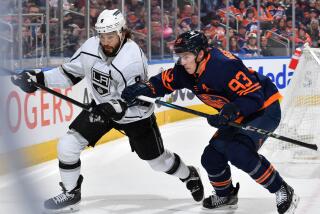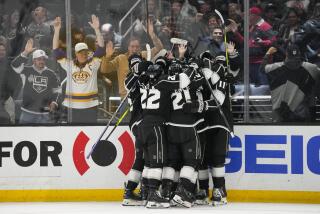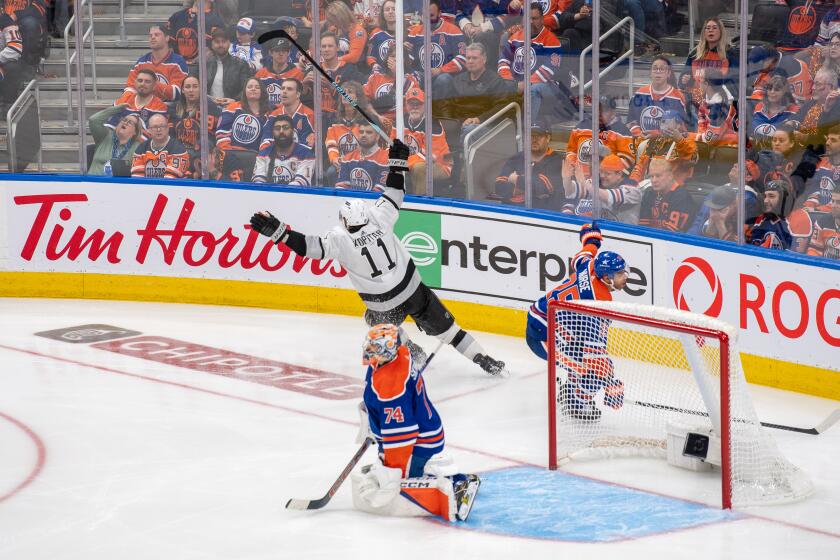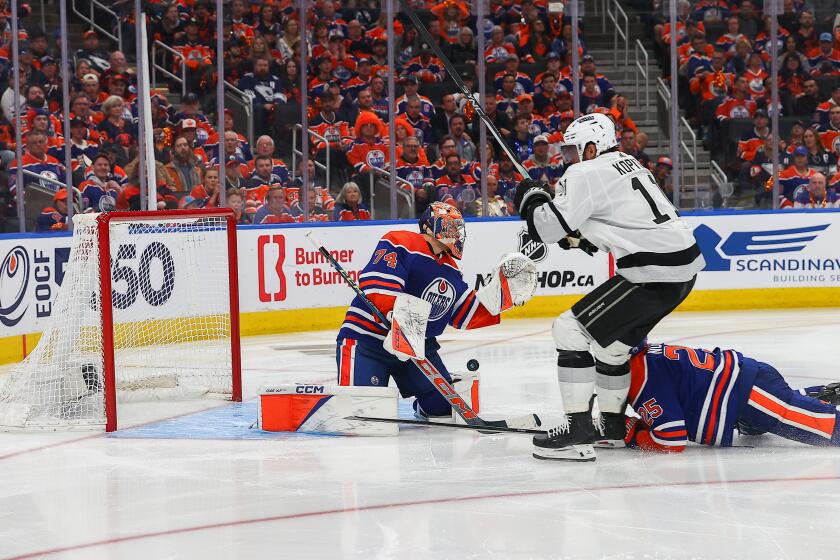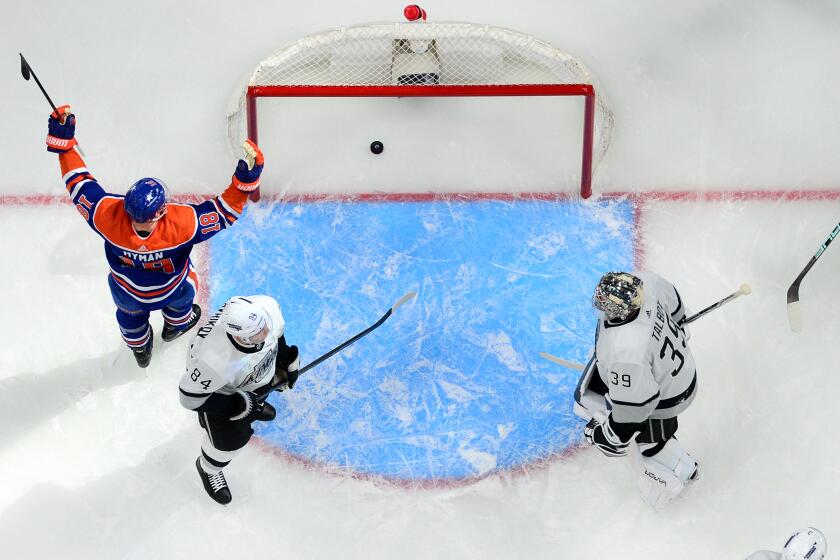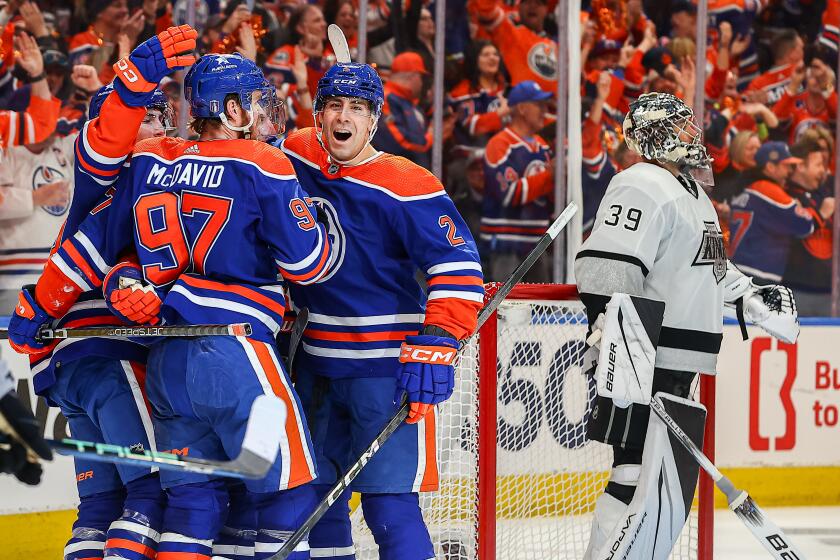Kings’ Marian Gaborik has made himself welcome
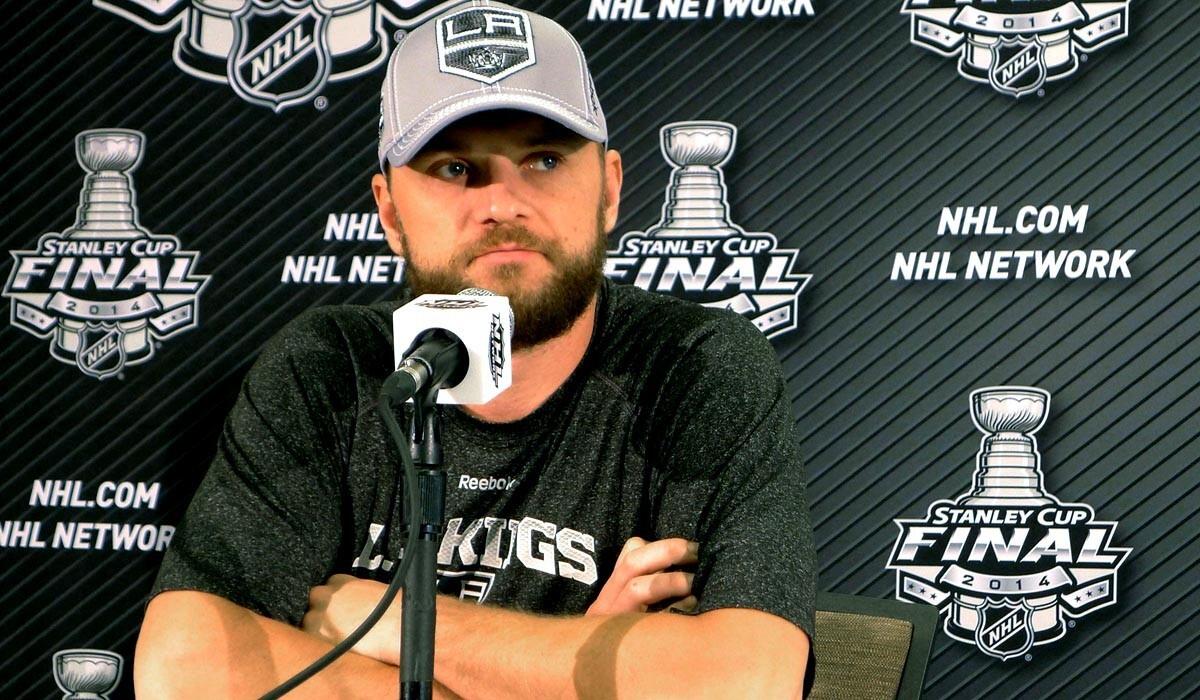
Those must be some serious block parties in historic Trencin, Slovakia.
Three times the Stanley Cup has made a turn close to Marian Gaborik’s street in Trencin, visiting his neighbors, Chicago Blackhawks star winger Marian Hossa in 2010, Boston Bruins defenseman and captain Zdeno Chara in 2011, and Hossa again in 2013.
Gaborik was proud and thrilled for his close friends and countrymen. Now the Kings winger is three wins away from securing a day with the Cup in Trencin. The Kings hold a 1-0 lead over the New York Rangers in the best-of-seven series. Game 2 is Saturday.
In his 13th NHL season, Gaborik will have to beat his former teammates, the Rangers, before he can celebrate.
“I went to all of those parties,” Gaborik said Thursday. “That maybe gives you that extra motivation, to see those guys winning the Cup.”
He paid homage to another NHL superstition and kept his hands off the Stanley Cup.
“No, I didn’t touch it, by the way,” Gaborik said. “I was very happy for them. That gives you that extra motivation, seeing guys living on the same street, to have them win it, give you extra jolt, extra motivation to be right with that group.”
This is Gaborik’s first appearance in the Stanley Cup Final. He reached the final four in 2003 with the Minnesota Wild and in 2012 with the Rangers. Then came two moves at the trade deadline in consecutive years, from New York to the Columbus Blue Jackets in 2013, and to the Kings in 2014.
But there haven’t been any of the complications you might associate with rapid-fire moves. Kings Jeff Carter, Mike Richards and Justin Williams went out of their way to immediately welcome Gaborik to the fold when he joined them on a trip in Canada after the trade.
Gaborik started tweeting about “Dancing With the Stars” to new teammate Jarret Stoll and Stoll’s girlfriend, Erin Andrews, a co-host of the show. Gaborik said his girlfriend had appeared for several years on a Slovak version of the dance show.
For him, it was important to find a comfort level, on and off the ice.
“I think he fit really well,” said center Anze Kopitar, a linemate. “We have a room where there’s a lot of character, a lot of good leaders. For Gabby to come in our room, I think he felt comfortable pretty quick. That’s obviously a big thing and a big reason why he’s feeling comfortable on the ice too. He’d be probably the best guy to ask, obviously, why is that.
“But I just think this group is so close together, it doesn’t matter if that’s a deadline deal or a new guy coming in right off the start; it seems like the transition, we make it a little bit easier on the guys for that transition.”
The understanding between Gaborik and Kopitar on the ice hit another level during the playoffs. Kopitar is the NHL’s leading scorer with 24 points and Gaborik leads in goal-scoring with 12, one more than he recorded in a spotty, injury-ravaged 41 games in the regular season. In 22 playoff games, Gaborik has 19 points.
Carter felt a similar ease in acclimating to the Kings when he joined them from Columbus before the trade deadline in 2012 — on the way to the Stanley Cup.
It wasn’t always so easy for new players, dating back to when Dustin Brown and Kopitar started their Kings careers. Kings General Manager Dean Lombardi needed to engineer a culture change, and that foundation could be traced to the acquisition of Stoll and defenseman Matt Greene from the Edmonton Oilers in the summer of 2008.
“When you have a group of guys that get along really, really well, you get a guy like Gaborik coming in, it’s easy to just mesh him into the group,” Brown said.
“On the road we have a lot of time. You’re not hanging out with the same two, three guys every time. There are no cliques on our team. When a new guy comes in, he doesn’t have to go hang out with those guys or these guys.”
The Kings were a much older group when Brown, now the team captain, arrived.
“The turnover was extreme each and every year,” Brown said. “At least that’s the way it felt.
“Just turning over every year, it’s hard to get to know guys on that type of level that you need. I’ve said this before: This core group sticks together for hundreds of games in many years.”
Twitter: @reallisa
More to Read
Go beyond the scoreboard
Get the latest on L.A.'s teams in the daily Sports Report newsletter.
You may occasionally receive promotional content from the Los Angeles Times.
